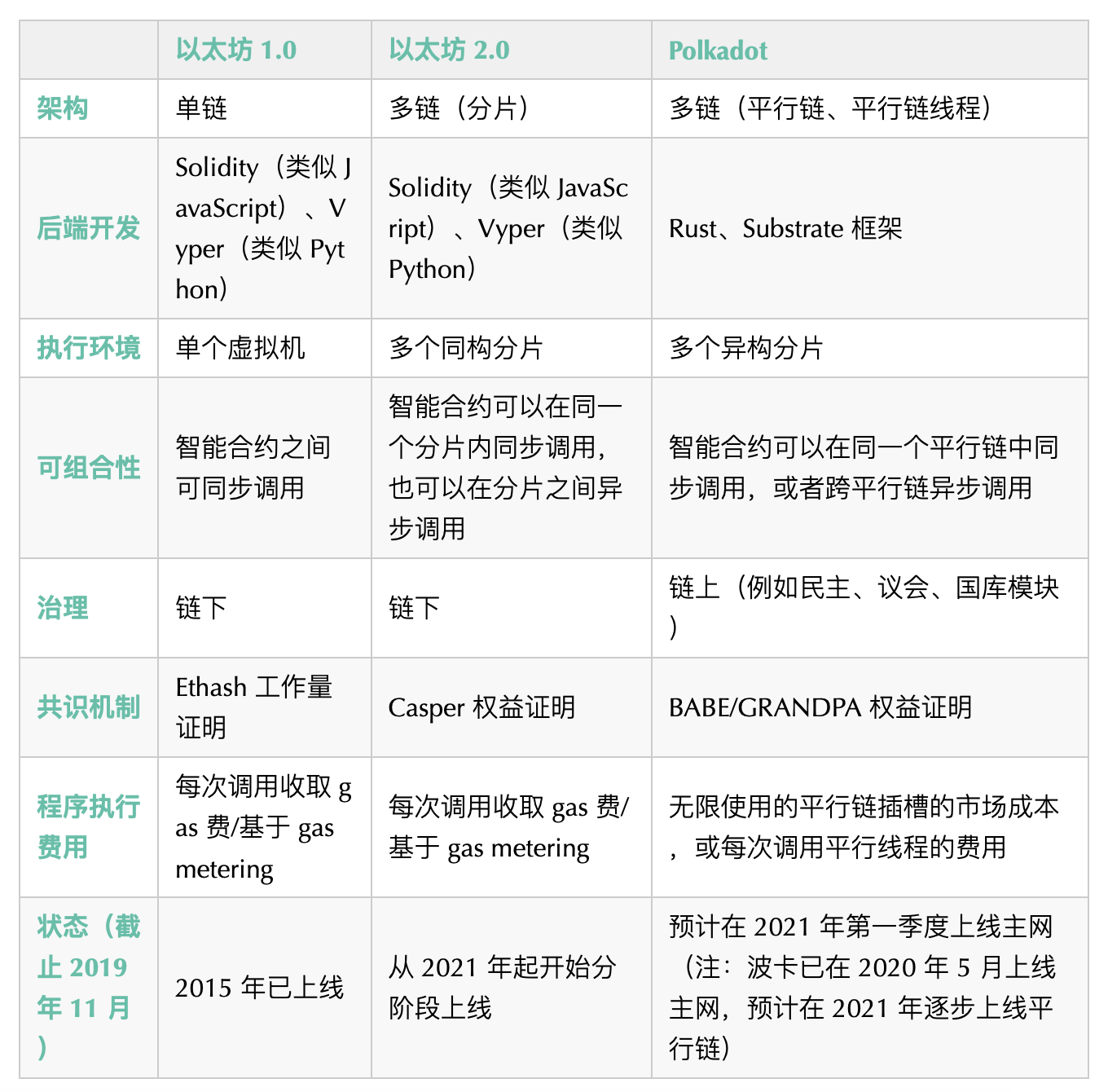Join the PolkaWorld community and build Web 3.0 together!

Join the PolkaWorld community and build Web 3.0 together!
At a high level, the two projects only partially overlap. Ethereum is a platform for deploying smart contracts, or pieces of logic that control native asset or state transfers on a single Ethereum chain. In contrast, Polkadot aims to provide a framework to build your own blockchain and provide the ability to connect different blockchains to each other. Despite these differences, both platforms are designed for developers to build decentralized applications.
mdnice editor
Despite the similarities, the strengths are quite different
In terms of similarities, both Ethereum and Polkadot aim to provide a space where developers can create decentralized applications. Both platforms include smart contract functions, Ethereum is based on Solidity, and Polkadot is based on ink! (Note: Although Polkadot has ink! contract language and contract modules, Polkadot relay chain itself cannot directly deploy smart contracts. Some parachains on the card can deploy smart contracts). If we look at Ethereum 2.0, both platforms are pursuing scaling strategies based on parallel execution. Each thread of execution is called a shard in Ethereum 2.0 and a parachain or parathread in Polkadot. Both Ethereum 2.0 and Polkadot will use Wasm as the underlying technology to support on-chain logic and state transitions.
However, there are important differences between Ethereum and Polkadot.
I tried to summarize what I think are some key points of difference:

mdnice editor
Ethereum: Big and Thriving, but Facing Scalability Challenges
The main strength of Ethereum is its large and mature ecosystem of developers, users, and businesses, including its rich developer tools, tutorials, and more. It has gained significant network effects from this ecosystem, making it the de-facto smart contract platform, and in many cases, Ethereum standards (ERC-20, etc.) the industry standard.
Equally important is the value of the Ethereum network, providing a high degree of economic security based on the value of the underlying ether. The DeFi field is one of the most concerned by developers in the field of encryption. It is mainly built on Ethereum and takes advantage of the composability between different Ethereum smart contracts. Call each other in the virtual machine.
The main challenge facing Ethereum is scalability. The success of the CryptoKitties application demonstrates some of the scalability limitations affecting Ethereum 1.0. A popular application can significantly reduce the performance and throughput of transactions on the network.
Ethereum 2.0 aims to solve all of these scalability issues, but it is a multi-year roadmap that comes with execution risks that come with years of refactoring the platform. Most of the Ethereum core development efforts will be devoted to Ethereum 2.0, leaving the existing Ethereum 1.0 chain with little room for upgrade and improvement.
mdnice editor
Polkadot: built on a flexible framework, but it's new and unproven
The biggest advantage of Polkadot is Substrate. Substrate is a development framework for creating Polkadot-compatible blockchains, providing different levels of abstraction depending on the developer's needs. Polkadot itself is built using Substrate. It drastically reduces the time, effort and money required to create a new blockchain.
Compared with smart contract platforms such as Ethereum, Substrate provides developers with a larger canvas to experiment. It allows full control over the blockchain's underlying storage, consensus, economics, and state transition rules, which cannot normally be modified on standard smart contract platforms.
Polkadot's design that allows for shared security within its network is another strength. Shared security has two main benefits:
First, it reduces the burden on parachain builders by providing security services from the relay chain. This is different from the approach taken by other networks like Cosmos, where each zone is fully responsible for its own security. This shared security simplification reduces builder friction and simplifies the process of launching new parachains.
Second, shared security provides a framework for parachains to communicate with each other, ultimately allowing parachain specialization. It reminds me of the old Unix philosophy, where you create tools that do one job and do it well. Then, you can achieve higher-level goals by combining these purpose-built tools. I can see something similar happening in the Polkadot ecosystem. This is the power of Polkadot's design, and this creates powerful network effects across the network.
mdnice editor
how to choose
how to choose
All in all, if you're a developer looking into both platforms for your decentralized application, it's a bit of an apples and oranges comparison.
If your application can be easily represented as a smart contract, if your use case is affordable in terms of gas costs, if you don't need a lot of transaction throughput or the underlying economics of the control system, or if you need Interoperate with other Ethereum ecosystem projects from time to time. Then developing on Ethereum is usually simpler than Polkadot.
On the other hand, if your application is best served by a dedicated blockchain, if it requires higher transaction throughput performance, if you want full control over the environment your application runs on, state transition functions, storage and economics, and if you can accept higher implementation complexity, or have use cases that require cross-blockchain integration, Polkadot will meet those requirements.
Original: https://www.purestake.com/blog/ethereum-vs-polkadot/
Translation: PolkaWorld
Polkadot offline party forecast:
Tomorrow (September 25), PolkaWorld will hold a Polkadot meetup in Chengdu to communicate with you:
Dr. Gavin Wood's vision for Web 3.0
And how Polkadot can realize the vision of Web3.0
How DeFi continues to achieve another explosion under Web3.0
Welcome to learn Substrate:
https://substrate.dev/
Follow Substrate progress:
https://github.com/paritytech/substrate
Follow Polkadot progress:
https://github.com/paritytech/polkadot
Follow Substrate progress: